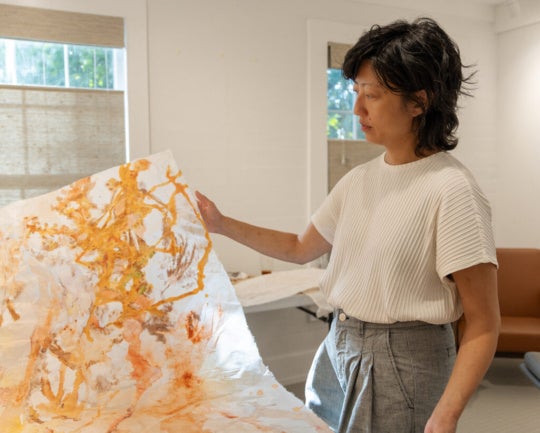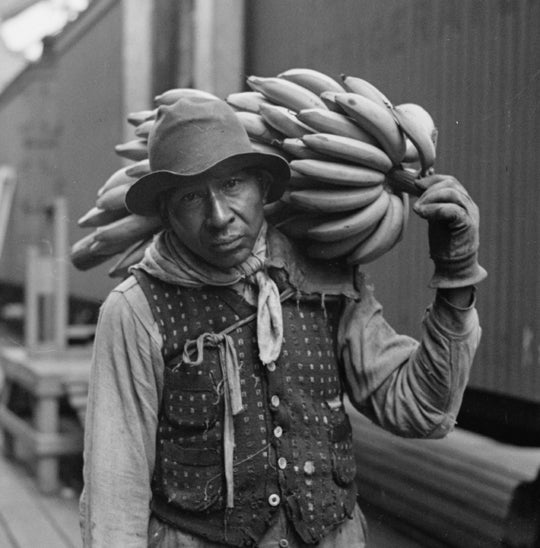
The work of Alex Brewer, also known as the graffiti artist HENSE, revels in the sheer act of creation. In his street murals, blots of saturated color and scrawls of emotive line play across walls and structures, enlivened by their own sense of being. Brewer’s animated use of rhythm and spacing became hallmarks of his paintings, but in his new show “Cut,” on view at Sandler Hudson Gallery through July 9, his joyful practice often feels stiff.

In three identically sized pieces, two untitled works and Stacked, a multitude of painted plywood cutouts wrestle for space within their confines. The crowded arrangements squeeze the out of these colorful forms and leave little room to catch one’s breath. These attempts at expressing joy appear forced and therefore excessive, as if overcompensating.
While Brewer has expressed the importance of transparency in his practice, the bare screws used to fasten the cut pieces of wood to the panels distract the viewer from completely engaging with the work. The heavy-handed construction foregrounds their artificiality, blocking the possibility of fully entering the swirl of color and form.

Conceptually and formally located between Brewer’s street murals and these cut-out pieces, the work 41 Shapes possesses a stronger sense of composition because of the playful brushwork that adds greater variation to the piece. The wooden components largely come off as a contrived gesture, but certain areas exhibit the unbridled joy that has earned the artist admiration. The red triangle and cloud- shaped form on the right hand side of 41 Shapes seem to bounce against a yellow horseshoe, quietly floating and vibrating in space.
The work 21 Shapes has movement and room to breathe, allowing it to deliver the satisfaction that other works in “Cut” don’t. The considered placement of each form creates a pulsing effect that imbues the shapes with whimsy and warmth. The larger size of the 21 individual shapes gives each piece a discernible and satisfying physicality.

In the back gallery, 15 works on paper exude an effervescent energy. Varying in form, palate, and execution, they speak to Brewer’s control of his process in this particular medium. One work, however, stands apart. With nearly the entire composition covered in black, a small, hopeful band of color struggles against an unflinching black sludge that threatens to extinguish it, breeding a sense of urgency and tension.
This work’s atypical ominous quality could be interpreted as the artist’s concern for the survival of his works in a world constantly facing destruction, especially considering that much of his art is at the mercy of time and a world out of his control (this is especially true for his outdoor works, which are subject to the elements and real estate development). Yet, that sort of acknowledgment of destruction is hopeful, as individuals like Brewer will set out to create again simply for the joy it brings not only to the artists themselves himself but also to those who see it.
John Burns received his BFA in painting from Georgia State University.




